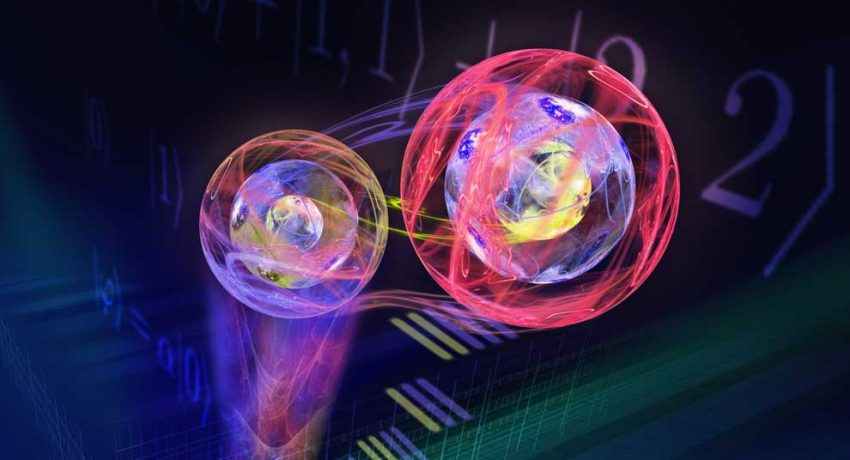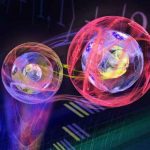Researchers Teleport Information Between Two Computer Chips for the First Time

For the first time, researchers and scientists from the University of Bristol, in collaboration with the Technical University of Denmark (DTU), have achieved quantum teleportation between two computer chips. The team successfully developed chip-scale devices that are able to harness the applications of quantum physics by generating and manipulating single particles of light within programmable nano-scale circuits.
Unlike regular or science fiction teleportation which transfer particles from one place to another, with quantum teleportation, nothing physical is being transported. Rather, the information necessary to prepare a target system in the same quantum state as the source system is transmitted from one location to another, with the help of classical communication and previously shared quantum entanglement between the sending and receiving location.
In a feat that opens the door for quantum computers and quantum internet, the team managed to send information from one chip to another instantly without them being physically or electronically connected. Their work, published in the journal Nature Physics, contains a range of other quantum demonstrations. This chip-to-chip quantum teleportation was made possible by a phenomenon called quantum entanglement. The entanglement happens between two photons (two light particles) with the interaction taking place for a brief moment and the two photons sharing physical states. Quantum entanglement phenomenon is so strange that physicist Albert Einstein famously described it as ‘spooky action at a distance’.
“We were able to demonstrate a high-quality entanglement link across two chips in the lab, where photons on either chip share a single quantum state,” says Dan Llewellyn, co-author of the study. “Each chip was then fully programmed to perform a range of demonstrations which utilize the entanglement. The flagship demonstration was a two-chip teleportation experiment, whereby the individual quantum state of a particle is transmitted across the two chips after a quantum measurement is performed. This measurement utilizes the strange behavior of quantum physics, which simultaneously collapses the entanglement link and transfers the particle state to another particle already on the receiver chip.”
Bristol Co-author Dan Llewellyn said: “We were able to demonstrate a high-quality entanglement link across two chips in the lab, where photons on either chip share a single quantum state.
“Each chip was then fully programmed to perform a range of demonstrations which utilise the entanglement.
“The flagship demonstration was a two-chip teleportation experiment, whereby the individual quantum state of a particle is transmitted across the two chips after a quantum measurement is performed. This measurement utilises the strange behaviour of quantum physics, which simultaneously collapses the entanglement link and transfers the particle state to another particle already on the receiver chip.”
Another co-author, Dr Imad Faruque, also from Bristol, added: “Based on our previous result of on-chip high quality single-photon sources, we have built an even more complex circuit containing four sources.
“All of these sources are tested and found to be nearly identical emitting nearly identical photons, which is an essential criterion for the set of experiments we had performed, such as entanglement swapping.”

